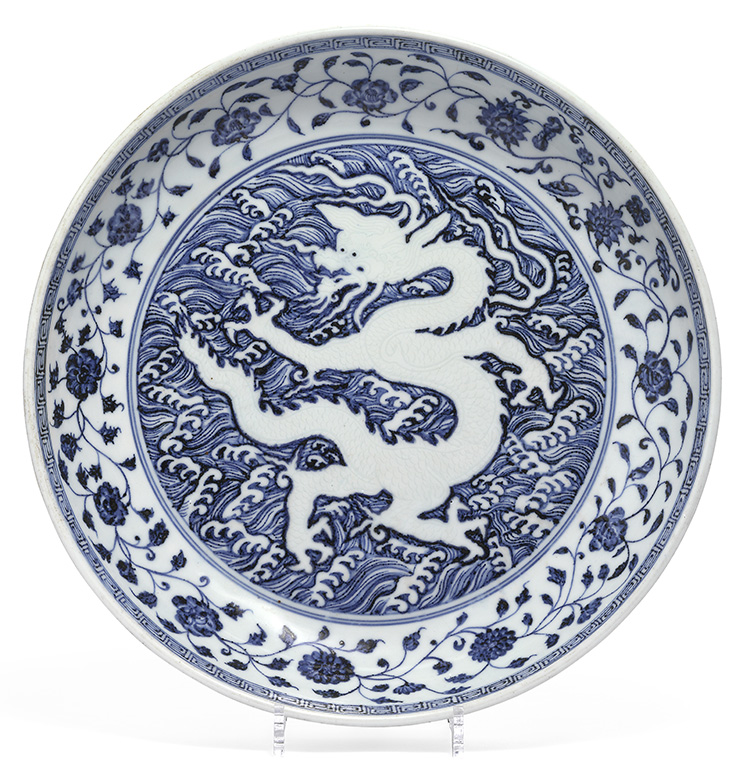Dragon Dish from the 15th Century Sold for DKK 35.5 million
The highest hammer price ever in the history of Bruun Rasmussen Auctioneers has been achieved after a nerve-wracking bidding war in the saleroom at Bredgade, Copenhagen. DKK 35.5 million (EUR 4.8 million / USD 5.8 million) was the price that rang through the room as the hammer came down for a very rare Ming blue and white dish from China with a dragon motif.
The beautiful and approximately 600-year-old antique dish surprised everyone in the saleroom. The dish comes from a prominent private collection by the Swede Salomon Sörensen (1856-1937), who for three decades worked as Malmö's city architect and designed and built more than 100 buildings in the city with inspiration from the Renaissance and the city of Florence. Sörensen was a passionate collector of Chinese and Japanese decorative art and had an enormous knowledge within this field.
"We were well aware that the dish would fetch a good price and that there would be a great deal of interest in it. We were aware that it would appeal to collectors all over the world, not least in China. We had therefore also done our best to market the dish in different media. Yet, I have to admit that our estimate was a bit off the mark, but the result itself can certainly be described as having hit the bullseye."
Ralph Lexner, Head of the Department of Asian Art and Antiques at Bruun Rasmussen Auctioneers
The Dragon – a Symbol of Happiness
|
The motif is imaginative: A scaly dragon twists and turns in a rolling sea surrounded by lotus flowers. The dragon as a motif has been used in Asia for centuries, and the mythological creature is often depicted as a mixture of different animal species with, for example, a snake's body and a lion's head. In Chinese mythology, it is associated with happiness, nobility and strength – traits that are far removed from the legends of the Western world about dragons as frightening, fire-breathing monsters. The three-clawed version of the dragon that we encounter on this dish has traditionally been associated with nobility, where the imperial dragon is always depicted with five claws. One of the most well-known and widely used reference works when it comes to ceramics from this part of the world is Wang Qingzheng's "A dictionary of Chinese ceramics" from 2003, and on the front page, you can see a similar dish with the three-clawed dragon, which underscores that we are dealing with an antique piece of rare quality. |
Experience the nerve-wracking minutes as Jesper Bruun Rasmussen auctioned off the Chinese dragon dish.
For further information, please contact:
Ralph Lexner: +45 8818 1161 · rl@bruun-rasmussen.dk
